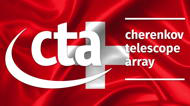Speakers
Description
After more than 100 years since their discovery, cosmic rays (CRs) are still one of the most intriguing open questions in astrophysics. Intrinsic difficulties are unavoidable when trying to identify the sites of production and acceleration of these charged particles due to the magnetic deflections they undergo when travelling across galactic and extragalactic distances. However, in the era of multimessenger astrophysics, hints of a cosmic accelerator might come from the detection of high-energy $\gamma$ rays and/or neutrinos that are expected to be produced by the interactions of CRs with the ambient matter and radiation in the vicinity of a potential source. IceCube, the largest neutrino telescope ever built, provided some years ago the most emblematic and fruitful example of synergy between $\gamma$-rays and astrophysical neutrinos in the identification of a potential source of CRs. A high-energy neutrino alert detected from a restricted region of the sky, compatible with the location of the known blazar TXS 0506+056, triggered a follow-up of several $\gamma$-ray experiments that observed an enriched activity from the same location and coincident with the neutrino event. Additionally, an analysis of the data at the same location but prior to the alert time revealed a prominent neutrino flare in 2014/2015. Recently, IceCube has also presented an evidence at $3.3\sigma$-level of a time-integrated neutrino excess from four sources in a catalog of astrophysical objects selected on the basis of $\gamma$-ray observations. Such an excess is due to the Seyfert galaxy NGC 1068 (also reported as the most significant northern spot in a time-integrated all-sky search), the aforementioned blazar TXS 0506+056 and the BL Lacs PKS 1424+240 and GB6 J1542+6129. A subsequent time-dependent investigation of the same catalog confirmed the neutrino excess and provided interesting results at the location of M87, the most significant time-dependent source of the catalog and a well known emitter of ultra-relativistic jets of particles, recently popular also for the first picture of the black hole at its center. Gamma-ray experiments are expected to provide attractive insights in the following years: in particular, with a sensitivity that is 10 times better than any existing gamma-ray instrument and reaching energies up to 300 TeV, the Cherenkov Telescope Array project and its multi-messenger program might unveil new potential neutrino sources and help to reveal the origin of ultra high-energy cosmic rays.
